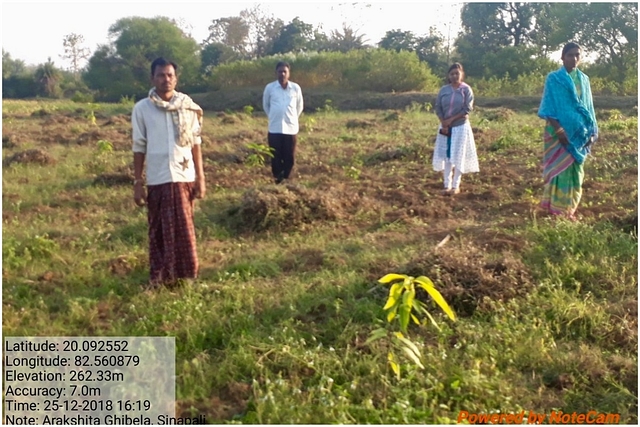
How Geo-tagging Is Introducing Transparency In MGNREGA Scheme
Geo-tagging of MGNREGA assets is one project of the NDA government where tech intervention is returning arguably the best results.
The UPA’s flagship programme, the Mahatma Gandhi Rural Employment Guarantee Scheme, (MGNREGS) which promised hundred days of guaranteed employment in addition to development activities such as water harvesting, drought relief, and flood control, has attracted controversy ever since its launch in February 2006 because of claims of leakages and corruption in general.
Issues related to asset creation, taking up of trivial projects, sometimes absence of projects, and misappropriation of funds were common.
Even Congress minister Jairam Ramesh had to confess that the programme they introduced failed to create productive and durable assets.
However, things have changed since 2016, when Prime Minister Narendra Modi, in a drought review meeting, called for online recording and monitoring of assets to check leakages and for effective mapping of terrain for future development. For that, he suggested asset reporting through geo-tagging and uploading of photographs with hand-held devices.
What is Geo Tagging?
Geo-tagging is a process of adding geographical information such as latitude and longitude to various media such as photos or videos. It helps users find a wide variety of location-specific information from a device.
An MoU was signed between the implementing agency of the MGNREGS, the Department of Rural Development (DoRD), Ministry of Rural Development, and National Remote Sensing Centre (NRSC), ISRO, Hyderabad for geo-tagging assets created under MGNREGA on 24 June 2016.
The NRSC developed the Bhuvan geo-portal app, a mobile-based geo-tagging application for the MGNREGA scheme. Within a short period, the ISRO’s Bhuvan app was linked with ‘NREGS-soft’, an interface operated under DoRD by National Informatics Centre(NIC) and enabled access to all state implementing departments.
How It Works
‘GeoMGNREGA’, as geo-tagging of assets created under MGNREGA is known, involves generation of an asset ID on the NREGS Soft after completion of work and marking it as a primary asset by the programme officer or the Gram Panchayat.
An asset may, however, have one or multiple (completed) works associated with it. In such cases, the ID of the primary asset is used for referring to the associated works.
Geo-tagging of completed assets is done through the Bhuvan mobile platform, which involves capturing of the GPS location of the asset along with two photographs taken by the MGNREGA Spatial Enumerators (MSEs).
Usually, Gram Rozgar Sahayakas, technical assistants or any other functionary at the Gram Panchayat level are designated as MSEs. Validation of the data collected is done by officers at the block level known as GIS Asset supervisors. The data validated is then approved by a state nodal officer and then registered on the Bhuvan portal and displayed on its web platform in the public domain.
As it stands, it is mandatory for states, and the union territories have to ensure that whatever work is completed with effect from 1 April 2017 must be geotagged within 30 days of completion of work. However, assets completed before are geotagged in a sequential manner enabling financial year wise priority from 2016-2017, 2015-2016, 2014-2015 and backwards till 2006-2007.
Adding to the transparency, the Ministry also launched ‘Janmanrega’,la citizen-centric mobile application (downloadable from Google play store) developed by NIC and NRSC on 19 June 2017. The application enables citizens to locate already geotagged MGNREGS assets on the Bhuvan Map Interface along with their attributes and two photographs using an Android mobile phone and also provide his/her feedback on any assets. The user could also search for assets nearby based on the user’s current location.
On an average, 30 lakh works/assets are completed annually through MGNREGS, across the country. As of now, more than 2.9 crore assets have been geotagged. The government’s commitment to transparency through technological intervention has ensured that very asset under MGNREGS is now promptly geo-tagged and available in the public domain for scrutiny. All works are monitored by geo-tagging-before, during, and after completion to ensure full transparency in all works. Nearly 100 per cent expenditure is now through Electronic Fund Management System (e-FMS) indicating the thrust on quality, transparency, and accountability.
In addition to ensuring transparency in a system prone to leakages, the GeoMGNREGA platform is now used by States/Union Territories for efficiently planning works on a particular site as well as avoid duplication of works while preparing labour budget.
Apart from MGNREGS, geo-tagging is now finding extensive use in other rural development programmes such as Pradhan Mantri Awaz Yojana (PMAY), Rashtriya Krishi Vikas Yojana (RKVY) and Pradhan Mantri Gram Sadak Yojana (PMGS).
Government agencies such as Forestry, Archeology and Tourism in the centre as well as states are also making good use of this technology. With increased intervention, the application geo-tagging is changing the development landscape in India. By bringing in more transparency and accountability, the Prime Minister will be remembered for transforming a leaky system to one of the most efficient systems in the globe considering the mammoth scale of the scheme.